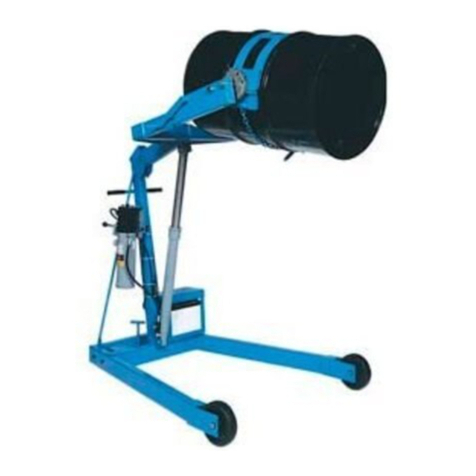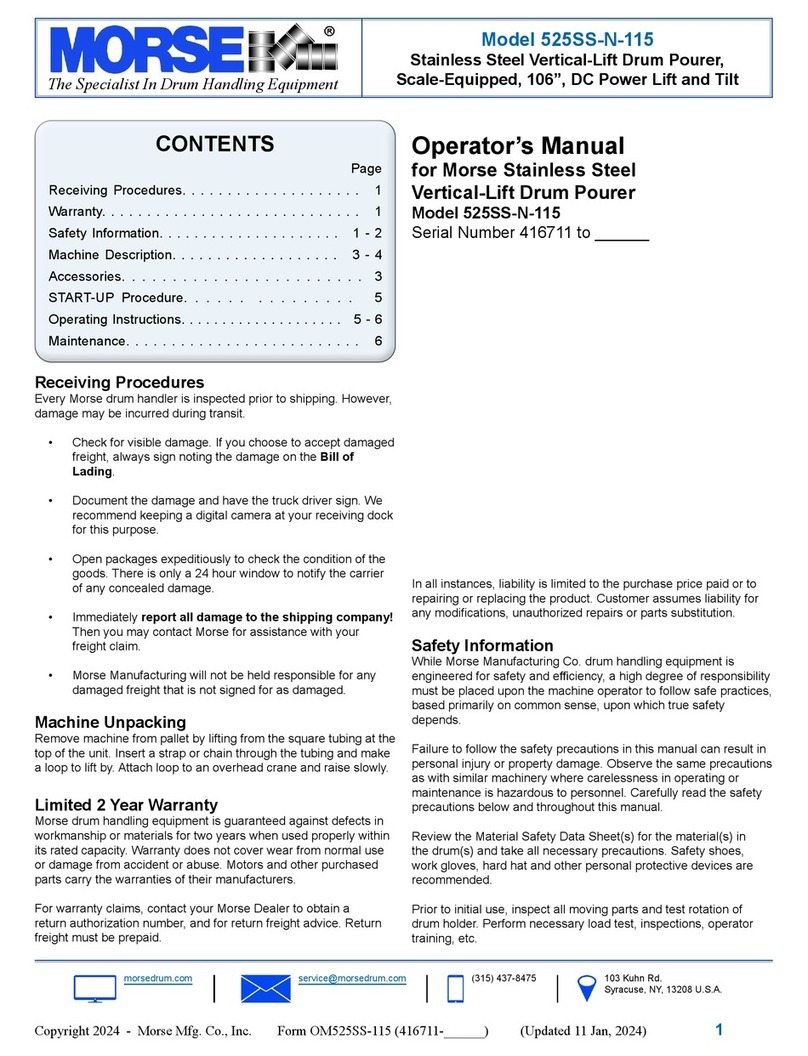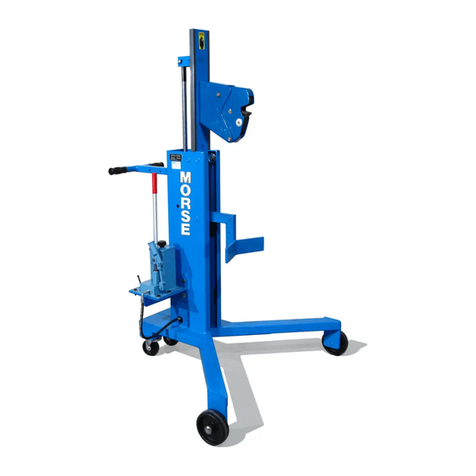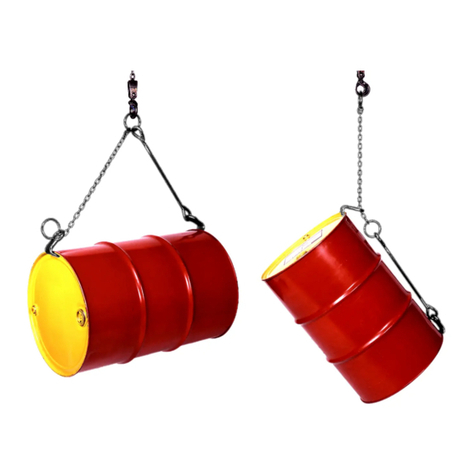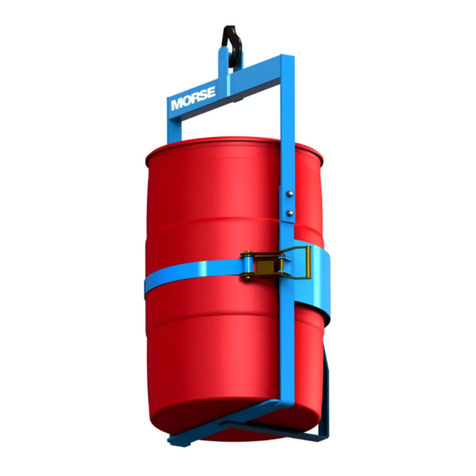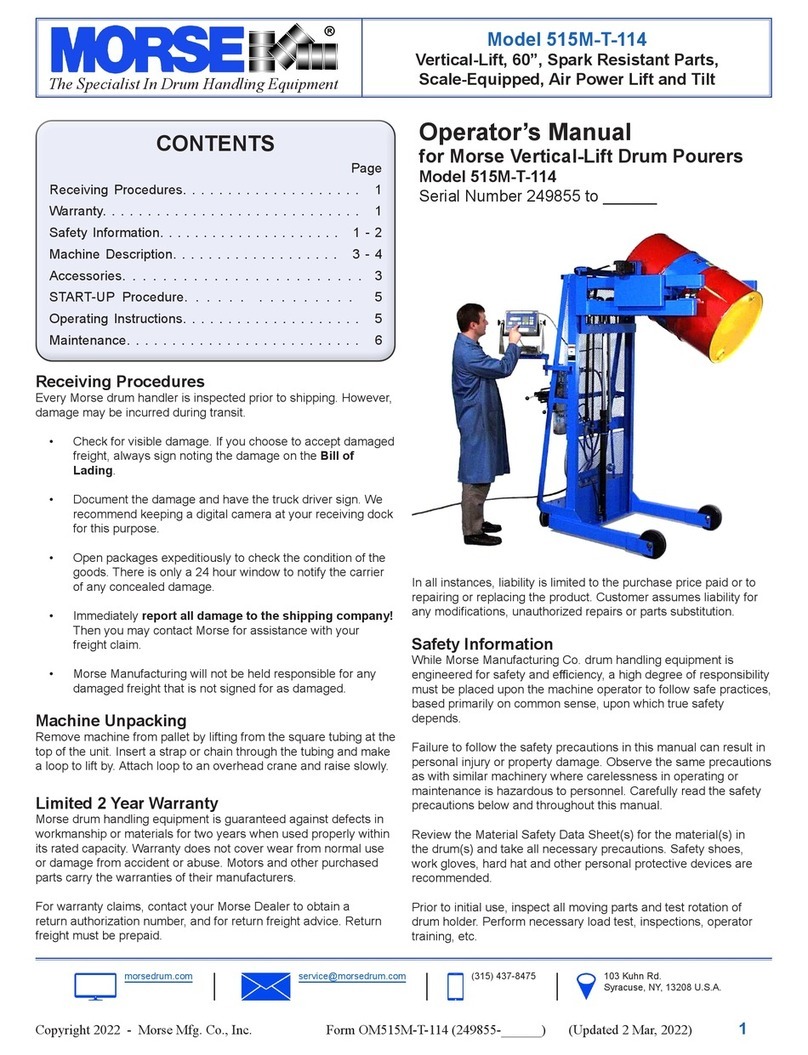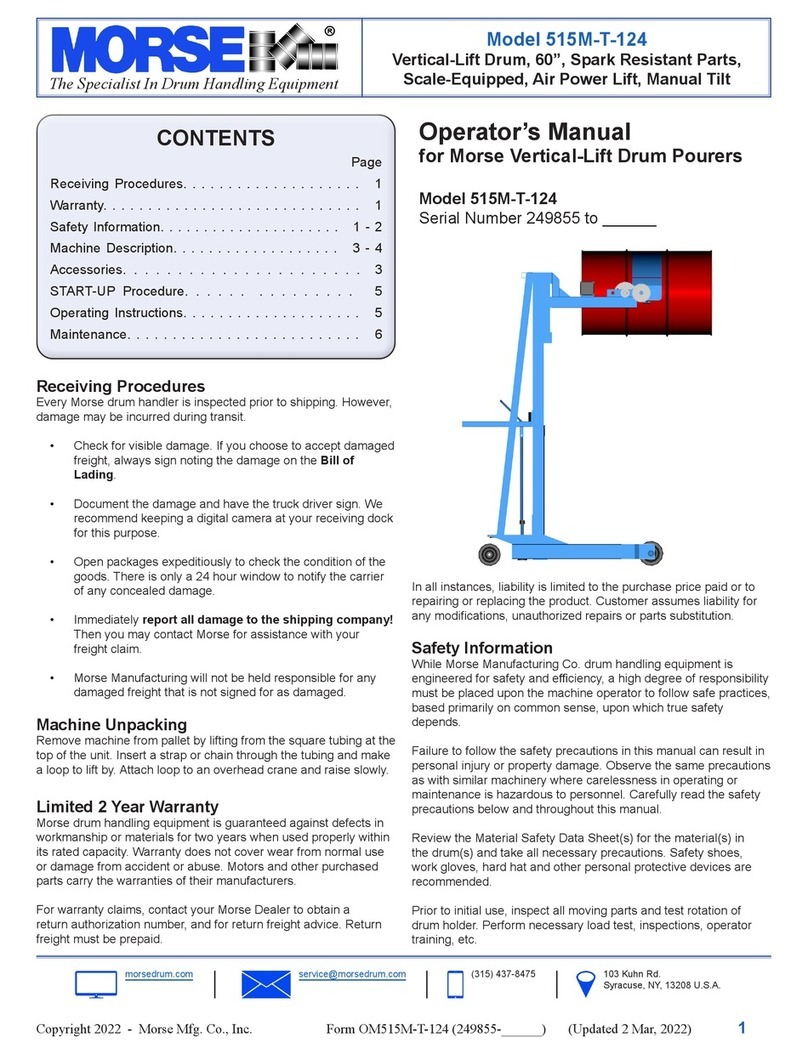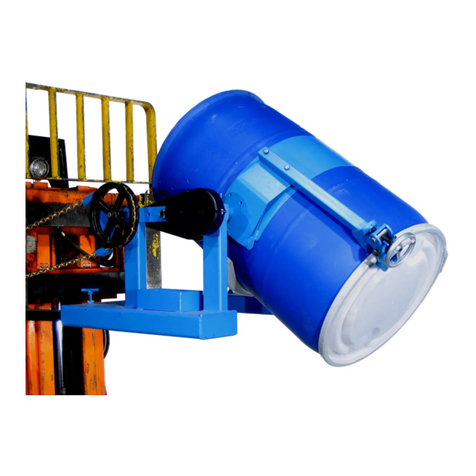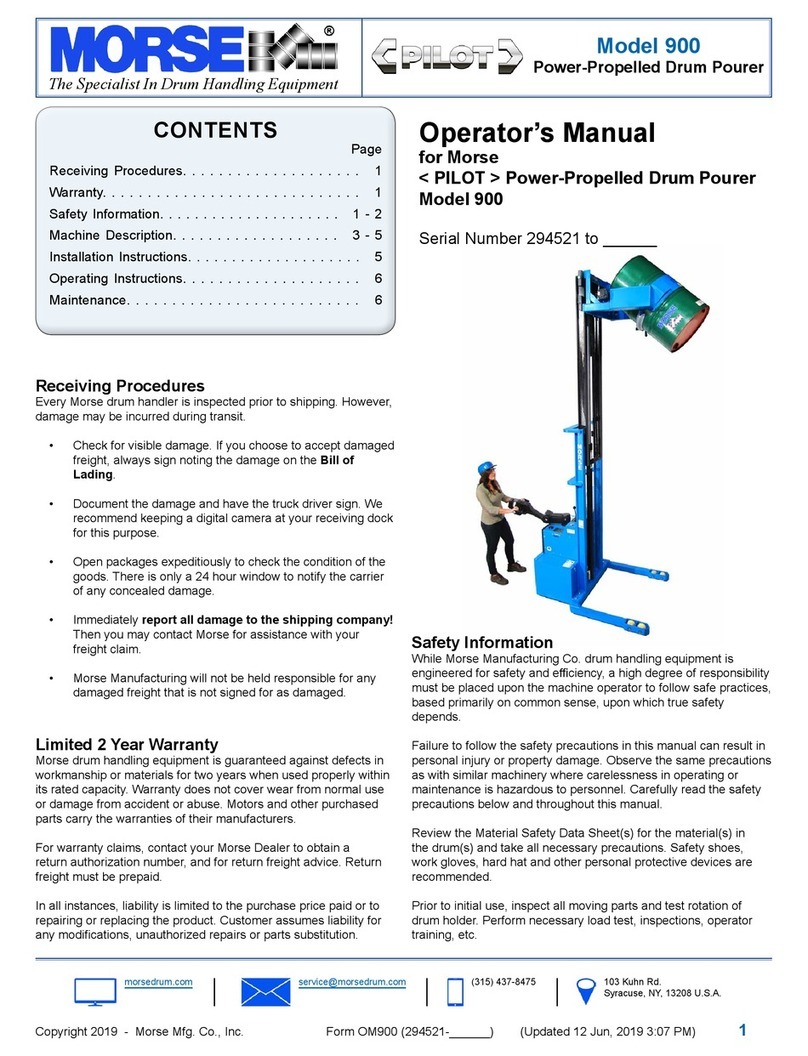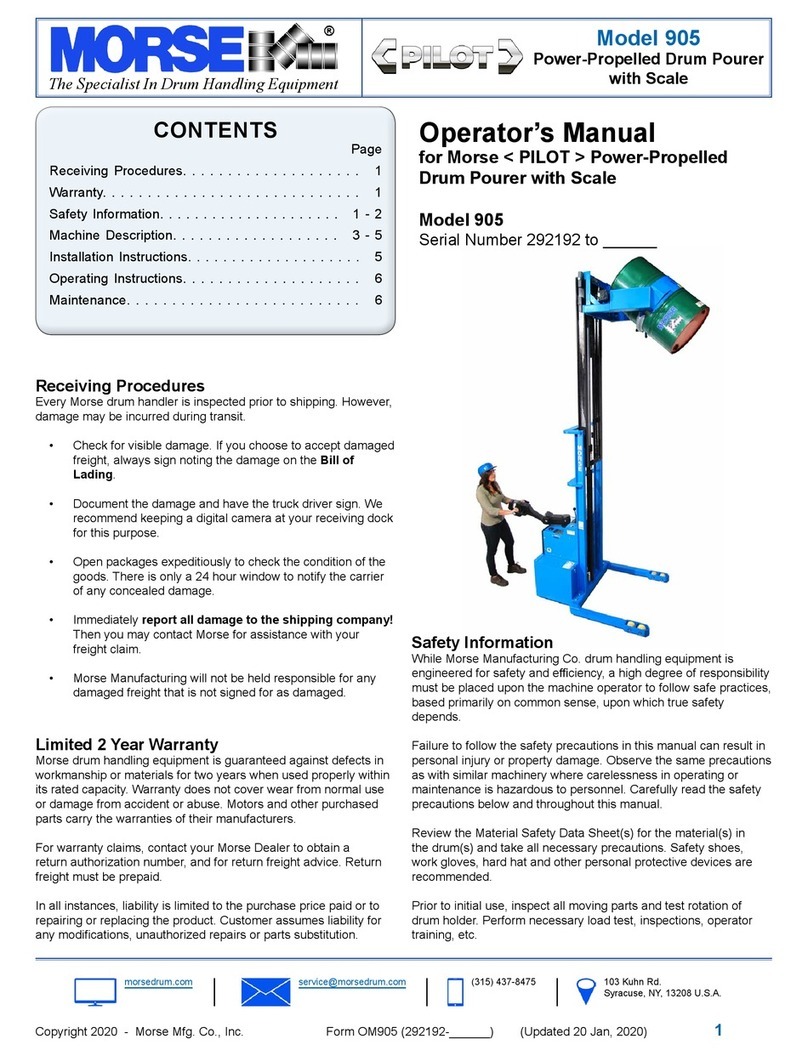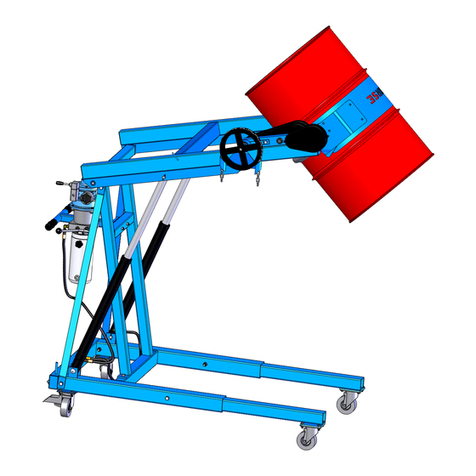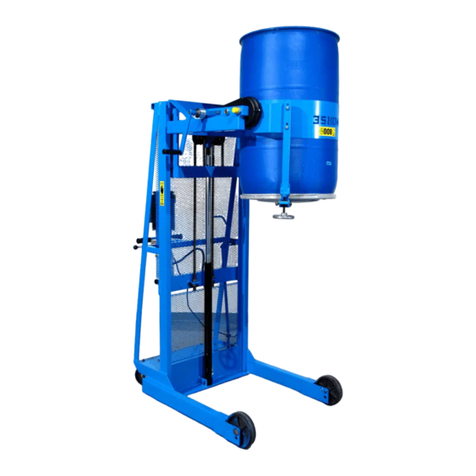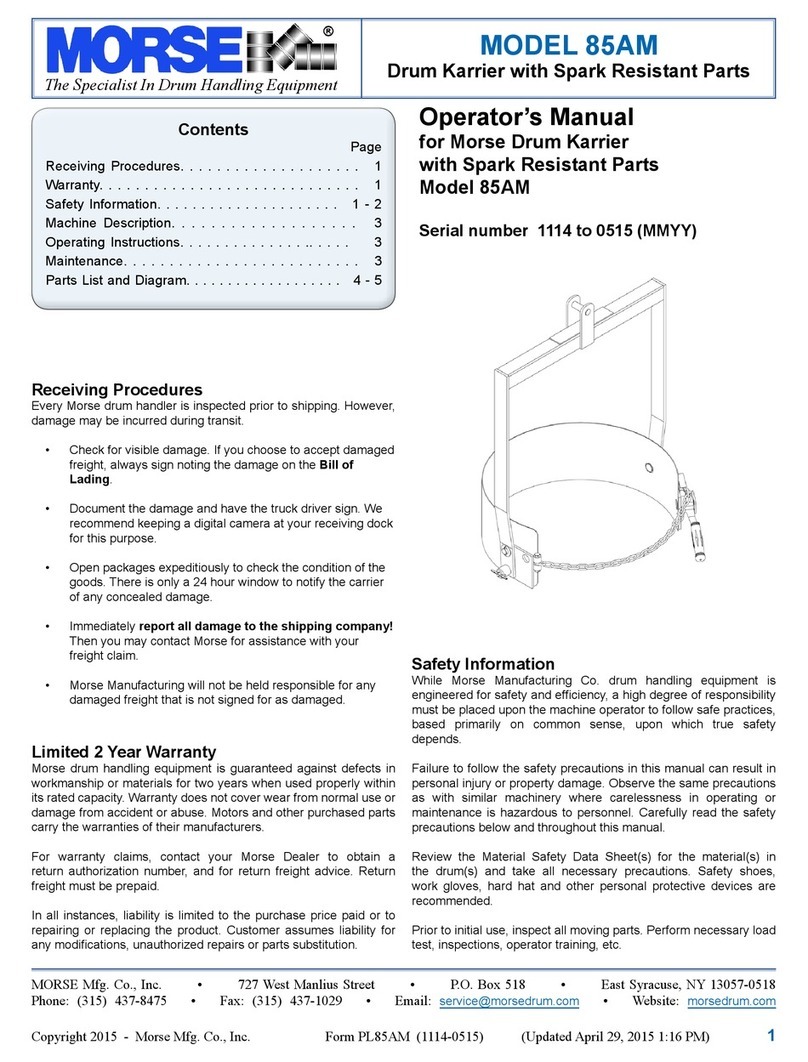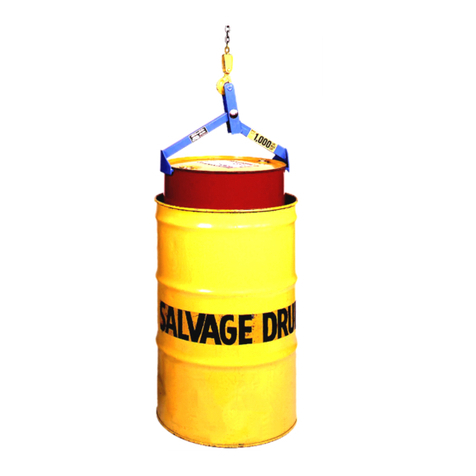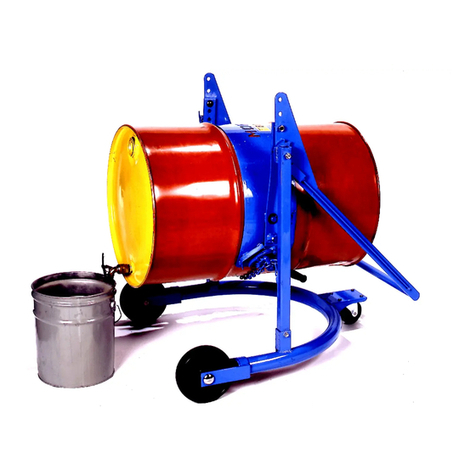
The Specialist In Drum Handling Equipment
Model 185A-HD
Heavy-Duty Kontrol-Karrier
Operator’s Manual for Morse Model 185A-HD Heavy-Duty Kontrol-Karrier
Serial number 0793 to 0309 (MMYY)
www.morsedrum.com
Copyright 2009 - Morse Mfg. Co., Inc. Form PL185A-HD (0793-0309) (Updated March 16, 2018 9:54 AM) 3
Machine Description
Model 185A-HD Heavy-Duty Kontrol-Karrier is designed to lift, transport and dispense a
standard 55-gallon steel drum 22.5” in diameter. The maximum capacity is 1500 Lb.
Options
Diameter Adaptors:Asmallerdiameterdrumcanbehandledwiththecorrectsize55/30
SeriesDiameterAdaptorinstalled(seeDiameterAdaptorliterature).
Important
Review the Material Safety Data Sheet(s) for the material(s) in the drum(s) and take all necessary precautions. Safety shoes, work1.
gloves, hard hat and other personal protective devices are recommended.
Please read all instructions thoroughly before attempting to operate your new Morse drum handler.2.
The185Heavy-DutySeriesKontrol-Karriershaveamaximumcapacityratingof1500Lb.foraFULLdrumand800Lb.foraHALF-3.
FULL drum, and are designed to lift and move a drum of the size and type noted above. DO NOT exceed this rating. Exceeding this
rating or handling drums other than those mentioned above is unsafe and could result in equipment damage, excessive wear, awkward
or dangerous handling.
When loading, unloading, operating, or maintaining your MORSE drum handler, always use care and good judgment. Maintain secure4.
footingandarmhold.Keephandsandlooseclothingawayfromallmovingparts.Neverallowanyonetobebelowanypartofaraised
drum handler or drum. Read operating instructions and review the pictures in the sales brochure before operation.
The185Heavy-DutySeriesarea“Group1structuralandmechanical”below-the-hookliftingdevicewhicharecoveredbytheAmerican5.
NationalStandardASMEB30.20.Theusershouldcomplywithallaspectsofthisstandard.
Operating Instructions
StartwithKontrol-Karrierontheoor.Lowerhoistandengagehoisthooktooff-centerliftpoint.EmptyKontrol-Karrierwillhangplumb1.
from off-center lift point.
RaisehoisttoliftKontrol-Karrierclearofoorandtransportittothedrum.2.
Suspend Kontrol-Karrier at a height which aligns drum saddle with center of3.
drum.
With binder chain (item 28) hanging freely, push Kontrol-Karrier against drum4.
so that saddle will encircle drum.
Secure the drum: drape the binder chain (item 28) across the face of the5.
drum and engage a link into the slot in the ratchet (item 37). Turn the ratchet
clockwise to tighten chain. If the chain doesn’t cinch tightly on the drum, lift the
pawl (item 33) to loosen and release the chain and try again with a different
link in the notch. Firm hand pressure on the ratchet handle should tighten the
chainsufcientlytoholdthedrum.DONOTusemechanicalaidssuchasa
pipe to extend handle for extra leverage.
Move hoist hook to lift point centered over the drum.6.
Raise hoist and position drum at pouring station.7.
Pour the drum by pulling on the pull chain (item 3) and rotating the drum to a8.
suitable pouring angle. For best control of drum pouring angle, pay out one
side of the chain loop while pulling in the other side, thus being able to hold
back the drum rotation. The chain lock on the bottom of the power arm can be used to prevent drum rotation. To do so, criss cross the
chainandinsertineachslotofthechainlock.IfthedrumhandlerisequippedwiththeMORStopTilt-Brake,thereisnoneedtohold
tensiononbothsidesofthechainloop.Brakingisimmediateandselfactuating,withoutadditionalstepsbytheoperator.Toaddthe
MORStopTilt-Braketoyourdrumhandler,orderpart#3900-Pforaeldinstallationkit.
Afterpouringiscompleted,rotatedrumbacktoverticalpositionandlowerhoisttoreturndrumtooor.9.
To remove drum: Pull ratchet handle clockwise to relieve pressure on ratchet teeth. Lift pawl handle (item 33) to release teeth10.
engagement and rotate ratchet to loosen chain and allow its removal from notch.
Maintenance
Lubricate gear teeth and roller chain.1.
Clean and oil ratchet, pawl and other moving parts periodically to maintain free action and reduce wear. Clean and lubricate more often2.
in environment where dust, dirt or other foreign particals will effect the performance of moving parts.
Periodically inspect all moving parts, framework and contact areas for signs of wear, fatigue or loosening. Tighten, adjust or replace3.
parts as necessary to prevent failure and maintain proper function.
